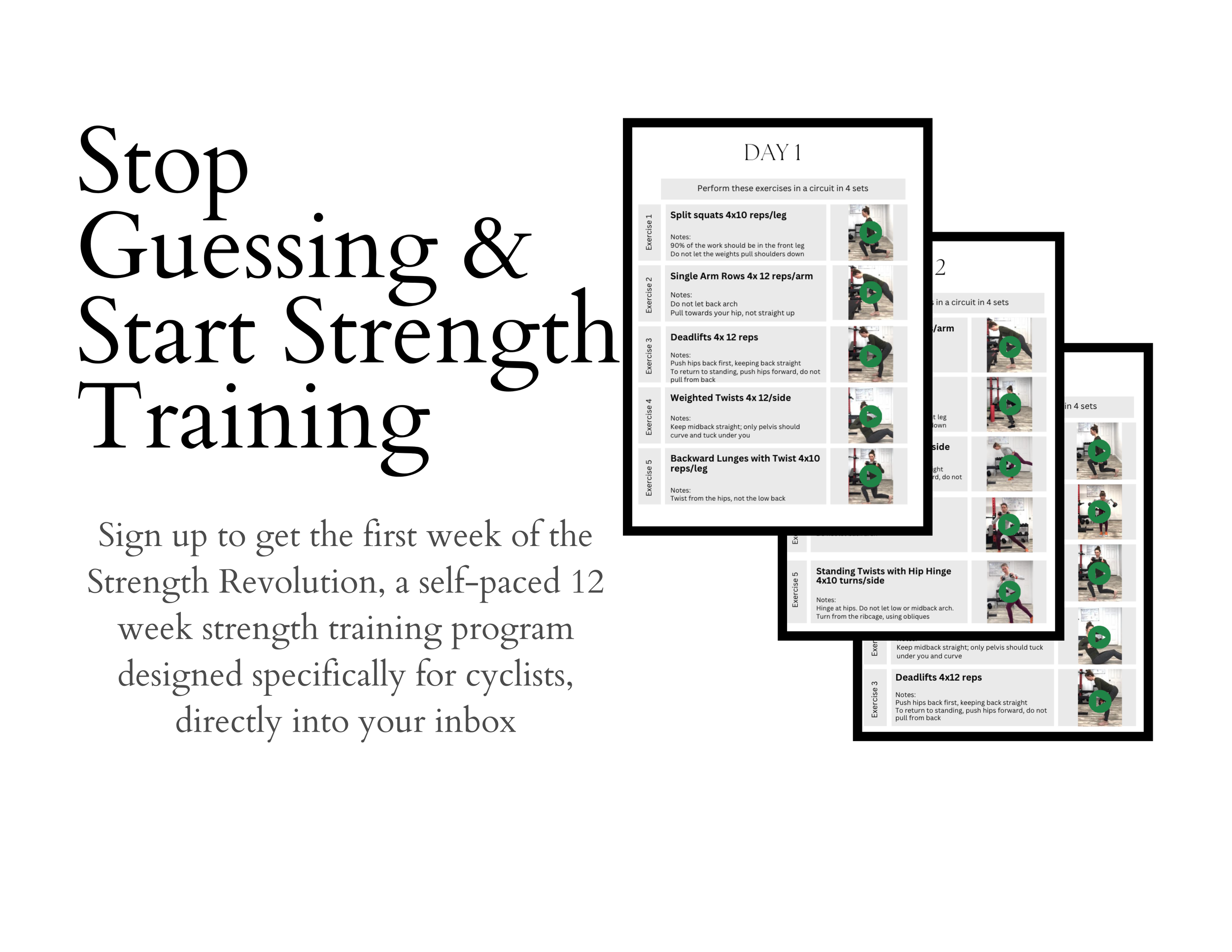Strength Training for Cyclists: The Missing Link to Power and Longevity
Many cyclists hesitate to trade saddle time for gym time—but if you want to ride faster, stronger, and longer, strength training for cyclists isn't optional. It's essential. (Especially if you’re over 30. Read why below)
But I get it. As a former competitive cyclist, it took years of convincing from my coach to get me to strength training. I always wanted to be out riding my bike, not in the gym. But over time, I learned it’s one of the most powerful, untapped tools to improve performance and prevent injury.
Why Cyclists Need Strength Training
Cycling is repetitive and linear. That means we use the same muscles over and over again in our pedal stroke, but leaves others underused—especially those that stabilize, rotate, and move in other planes. This imbalance can set us up for overuse injuries.
Strength training builds resilience and power—giving you the edge in sprints, hill climbs, and technical terrain.
The Muscle Science: Type I vs. Type II Fibers
Your muscles have several different types of fibers, which are designed for different kinds of force production. We’ll speak in general terms here about Type I and Type II:
Type I fibers: These are used for endurance activities like long rides, steady climbs, and tempo work. These are your aerobic workhorses and what get a lot of training with cycling.
Type II fibers: These are fast-twitch fibers used for explosive efforts—sprinting, surges, and quick hill climbs.
Cycling mostly trains Type I fibers, but strength training targets Type II fibers, improving:
Neuromuscular coordination and explosive power
Recruitment speed—respond faster to attacks, climbs, or accelerations and with more power
Efficiency in using all muscle systems, not just endurance ones
Bonus: Training these fibers in multiple ways (weights + sprints) promotes greater adaptation, which results in better recovery, maintenance of fitness, and improved cardiovascular capability.
How Strength Training Aids in Injury Prevention and Total-Body Balance
Most cycling happens in a single, forward direction. Strength training can add:
Lateral and diagonal movement
Core integration with force production
Greater joint and muscular balance
Improved bone density and muscular robustness to protect against injury when we do crash.
This 360-degree movement pattern is crucial for injury prevention and long-term durability.
For Masters Cyclists: Preserve Muscle, Preserve Performance
After age 30, we lose ~2-8% of our muscle mass per decade. Strength training helps slow, and can even reverse, this decline. Additionally, because cycling is a non-weight bearing sport, strength training helps us maintain our bone density, which also decreases as we age.
Recommendations:
Minimum: 1–2 sessions/week for maintenance
Optimal: 2–3 sessions/week for performance gains
Final Thoughts: Strength Training is Your Secret Weapon
Cycling alone won't build a bulletproof body. But adding strength training to your routine 2–3 times per week can:
Boost power and speed
Reduce risk of overuse injuries
Improve performance at any age
Stop seeing the gym as optional. Start seeing it as the secret weapon to crush your next ride.
As a physical therapist, bike fitter, and cyclist I know how important strength training is to improve performance and make you as robust an athlete and human you can be. That’s why I created the Strength Revolution, a 12-week self-paced strength training program designed specifically for cyclists who want the guidance and knowledge on how to be efficient and effective in the gym. It provides everything you need to become a stronger rider, without wasting your time with anything you don’t. Click below👇 to get started!



